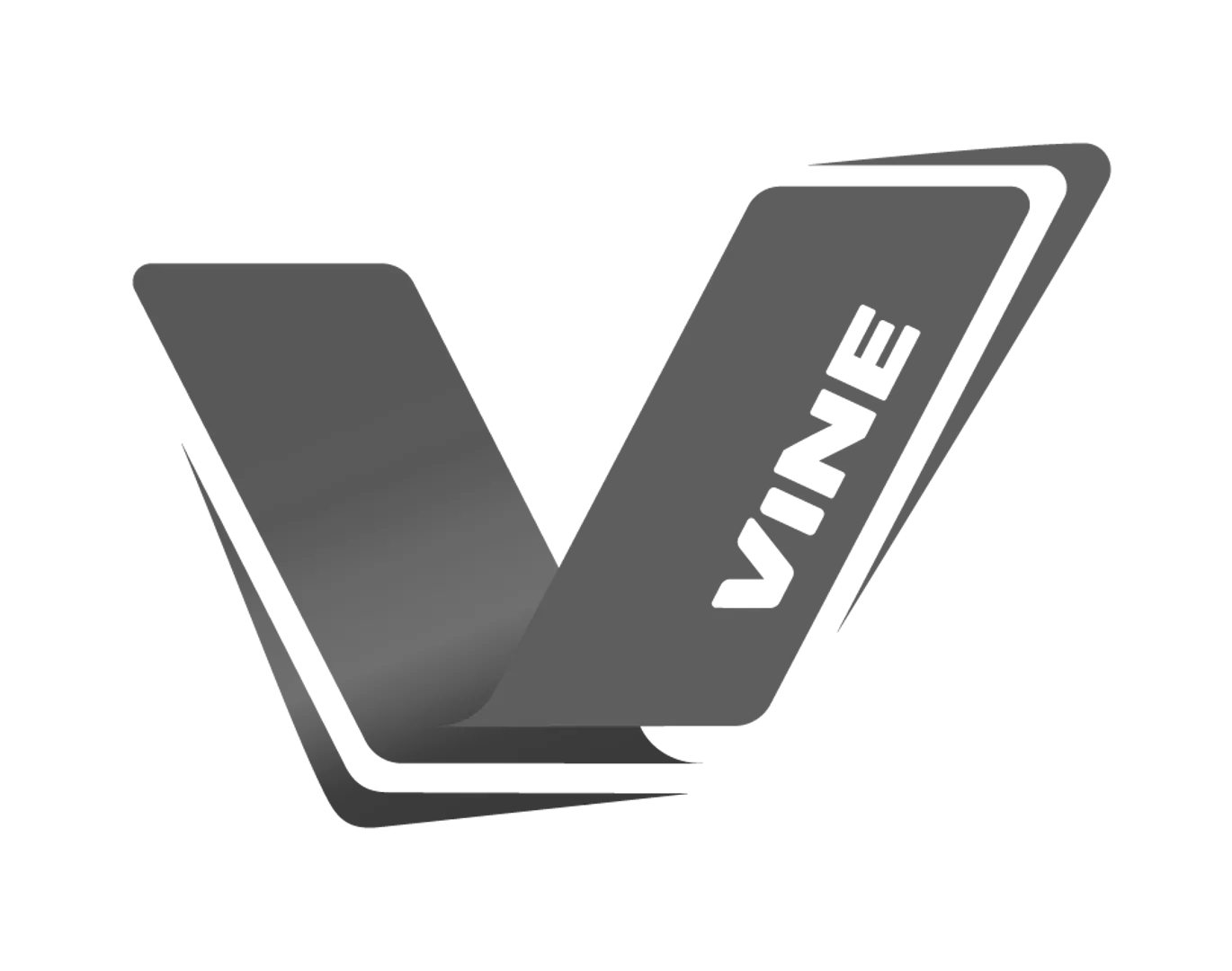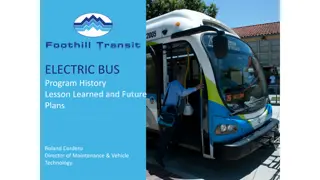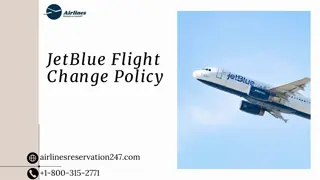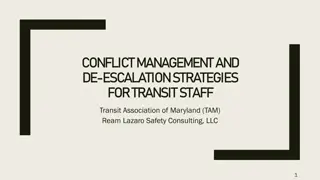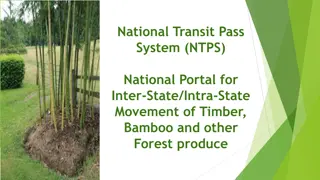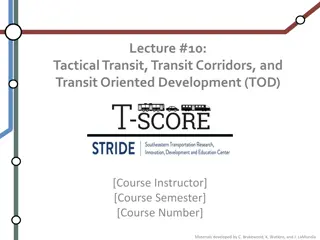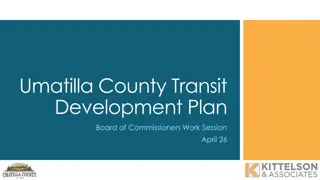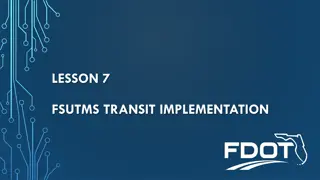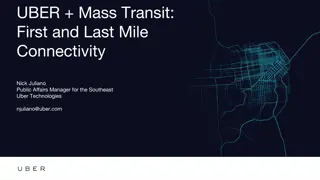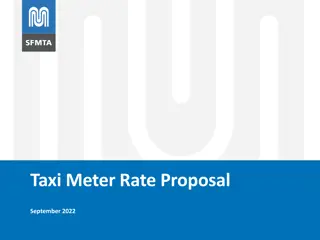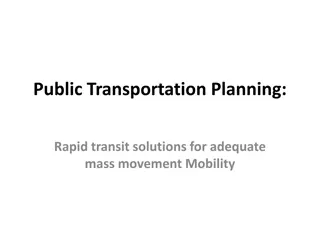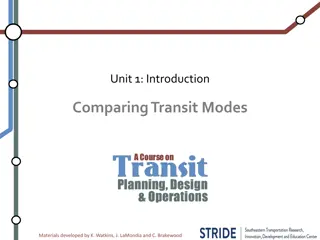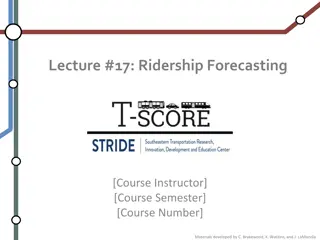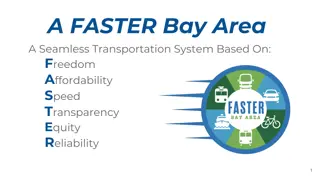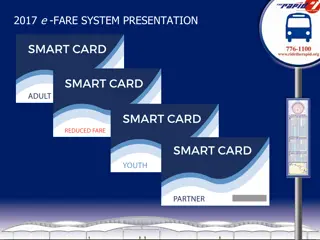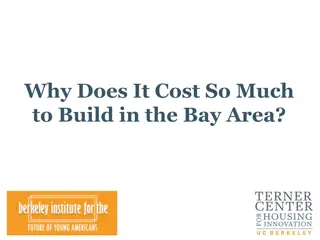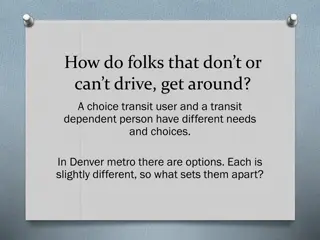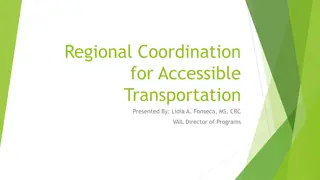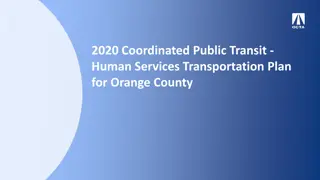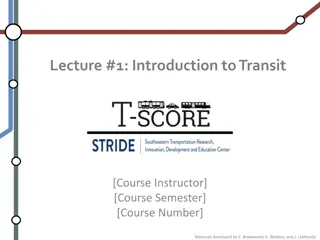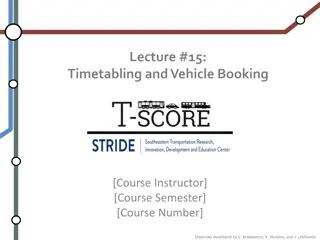Enhancing Fare Coordination and Integration in Bay Area Transit
A detailed look at the current fare policies and their impact on transit ridership in the Bay Area, highlighting the need for fare coordination and integration to support ridership growth and improve customer experience. Key issues such as optimizing ridership, meeting the needs of Equity Priority Communities, and planning for future transit are addressed. The fare integration tiers analysis evaluates the benefits, costs, and requirements of increasing integration levels in the region. Explore the collaborative efforts of transit operators, policymakers, and stakeholders towards creating a more efficient and inclusive fare system.
Uploaded on Sep 08, 2024 | 1 Views
Download Presentation

Please find below an Image/Link to download the presentation.
The content on the website is provided AS IS for your information and personal use only. It may not be sold, licensed, or shared on other websites without obtaining consent from the author. Download presentation by click this link. If you encounter any issues during the download, it is possible that the publisher has removed the file from their server.
E N D
Presentation Transcript
FARE FARE COORDINATION/INTEGRATION COORDINATION/INTEGRATION STUDY & BUSINESS CASE STUDY & BUSINESS CASE March 2nd, 2022
Transit Transit Operators Operators & & MTC MTC Working Working Together Together Fare Integration Task Force Fare Integration Task Force Project Ownership Co-Project Managers BART & MTC staff Transit Operator Staff Working Group Consultant team led by the firm Steer Policymaker and Stakeholder Engagement PolicymakerWebinar MTC PolicyAdvisory CouncilSubcommitteeon Fare Coordination/Integration Blue Ribbon Transit Recovery Task Force 4
Overview Overview of of Current Current Transit Transit Fares Fares and and Products Products LocalBus/LRT Fare (Adult Clipper Fare) $1.75 $1.60 $2.25 $2.50 $1.50 $2.05 $1.80 $2.00 * = Higher fare for FAST* Petaluma Transit NapaVine* AC Transit* SFMTA Golden Gate Transit* CCCTA* SamTrans* express/regional busservices SonomaCounty Transit WestCAT* VTA* SolTrans* Marin Transit TriDelta Transit* Vacaville City Coach Union City Transit SantaRosa City Bus LAVTA Does Not Offer a Pass Product Offers a Pass Product Zone BasedFares Distance/RouteBased Fares Caltrain 10miles Golden Gate Transit SMART SonomaCounty Transit ACE BART Golden Gate Ferry WETA 5 Information as of 2020, prior to COVID-19 Pandemic.
Project Project Problem Problem Statement Statement Fare policy is one among several factors that have constrained the growth of transit ridership in recent years. Current fare policies are informed by funding and governance models that incentivize locally-focused fares without providing a coherent set of policies to set fares that support ridership growth. Payment Experience CustomerValue Current fare policies can lead to a disconnect between the fare charged and the value a customer places on their trip. Current fare products,passes, payment technologies, and paymentexperiences may not be legible. As a result, Fare Coordination and Integration has a role to play in restoring transit ridership, supporting recovery from the COVID- 19 pandemic, and delivering the transportation system the Bay Area needs for its coming decades of growth. Key Key Issues The following key issues define how fares impact ridership and contribute to the key challenges which detract from rider experience: Current fares may not optimizethe ridership and benefits of proposed transportationinvestments. Current fares may not consistently meet the needs of Equity Priority Communities. Equity FutureTransit 4
Fare Integration Tiers The fare integration business case assesses the benefits, costs, and requirements associated with increasing tiers of fare policy integration in the Bay Area. 1. 3. 4. 2. + Overlays to the fare structure Regional+ Local Change Free + Discounted Transfers RegionalChange Common Distance-Based or Zone-Based Fare System for all Bay Area Transit Free Transfers to/from Local Transit (Local Bus and LRT) Common Distance-Based or Zone-Based Fare System for Regional Transit (Rail, Ferry, Express Bus) Passes andCaps Cap based on # of trips, cap based on price cap, pass at various price levels Discounted Transfers to/from Regional Transit (Rail, Ferry, Express Bus) Common Flat-Fare for Local Transit What level of benefit is unlocked by providing free or discounted transfers between agencies? What level of benefit can be unlocked from overlays to the fare system alone or as part of other tiers? Can further benefits be realized by changing all local operator fares? What additional benefits are unlocked by bringing all regional operators under one fare structure? 5
How Were Options Evaluated? How Were Options Evaluated? A business case framework is being used to make recommendations based on: Evaluation todeterminethe value and benefitof a fare structure The overall benefits of integration The comparative benefits of each tier For tiers with multiple options, the specific benefits of each option and best option within a tier 6
Overview Overview of of Key Key Findings Findings Are there fare integration options that offer a cost effective, equitable way to promote transit? Yes,especially in coordination with a broader user-focused regional strategy. Modeling suggests that fare structure changes could drive a small but significant increase in transit ridership (2-6%, depending on the strategy & revenue recovery level) Potential to drive ridership Ridership benefits of targeted integration strategies appear reasonably cost efficient (~$2-3 per new trip) as compared to alternatives such as global fare discounts ($3/trip) or service enhancement and system optimization(~$3- 15/trip) Analysis suggests investment in fare integration would have a positive social return on investment through benefits such as lower VMT and travel time savings Cost-effective Positivesocial ROI Fare integration strategies appear compatible with regional equity goals. Analysis indicates equity priority communities would receive a proportional share of the benefits of most strategies Balanced equity impacts Thereis uncertainty in the findings due to both the inherent uncertainty of modeling as well as post-pandemic uncertainty High uncertainty
Summary Summary of of Recommendations Recommendations 2 3 1 + Phase A Pilot(2022) Phase B Clipper 2 Launch (2023) Phase C Post Clipper 2 (2024+) Continueto assess benefitsand costsof a singledistance-or zone- basedfare structure for regional services Continuedstudyof this option in the context of broader evaluation of post- COVID ridership, role in the region, and funding strategyfor regional services Free/reduced cost transfers region-wide All-agency institutional/employer pass pilot All-agencyinstitutional/employer pass (final design pending pilot findings) Continue individual Clipper START cap (final design pending pilotfindings) to explore pass products and/or a options for Notes RegardingLocal Authority Recommendations do not contemplatetransferof locally-sourced funds between agencies Recommendations assume new regional funds would be sought to offset agency revenueimpacts Phase A and Phase B recommendationsdo not contemplatechanges to any agency board sfare-settingauthority
Feel free to get in touch with questions William Bacon - MTC Co-Project Manager, Fare Coordination/Integration Study + Business Case wbacon@bayareametro.gov 415.778.6628 Mike Eiseman - BART Co-Project Manager, Fare Coordination/Integration Study + Business Case MEisema@bart.gov 510.464.6435 22
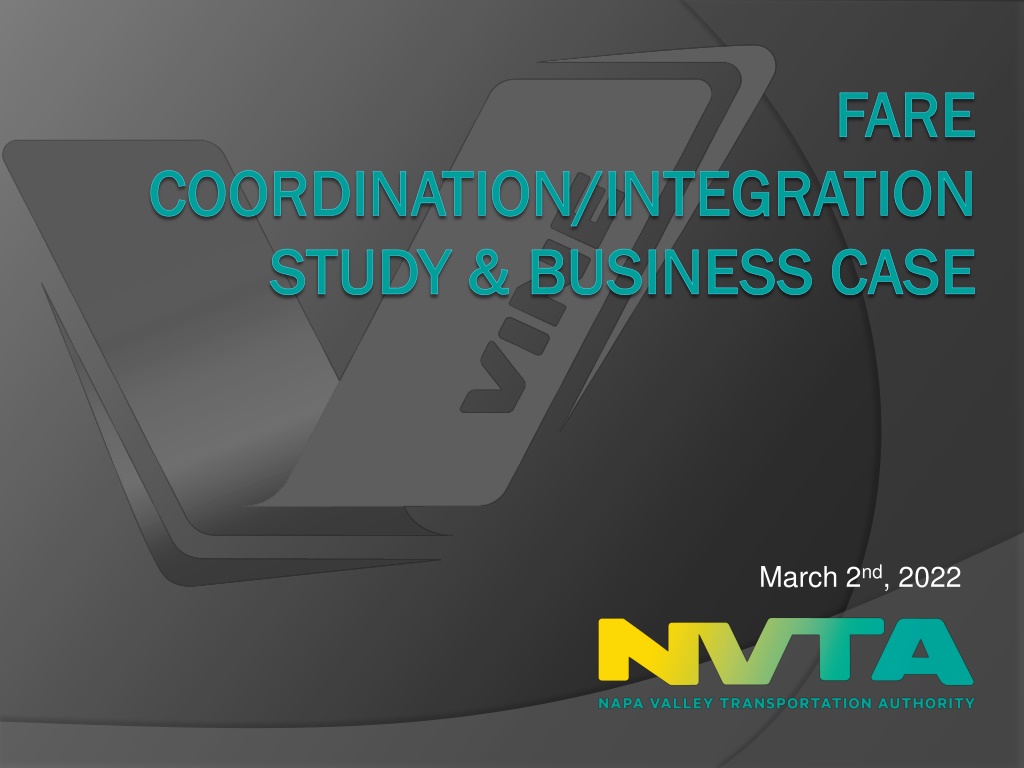
 undefined
undefined

